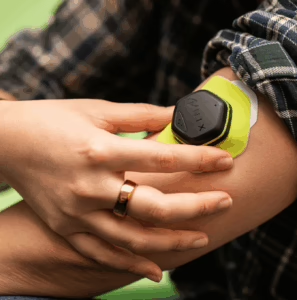Smart Wearables in Sports Massage: Continuous Monitoring and Adaptive Therapy
Sports massage aims to support muscle work, accelerate recovery and prevent injury. Modern wearable technologies enable therapists to track athletes’ physiological status in real time and adapt treatment protocols instantly. This article reviews bioimpedance-based body-composition analysis, continuous hydration monitoring, real-time stress and recovery indices, and provides a practical guide to device selection and studio implementation.
1. Bioimpedance Body-Composition Measurement
Bioelectrical impedance analysis (BIA) sends a small current through the body to estimate fat-free mass, fat mass and fluid distribution. Segmental, multifrequency BIA is valuable for therapists because it highlights muscle water shifts, tracks seasonal body-composition changes and, with mobile arm-band sensors, streams data even during training.
2. Continuous Hydration Monitoring
Dehydration swiftly reduces muscle performance. Cross-arm biosensors measure bioimpedance and infer whole-body water loss with second-by-second resolution. Alerts for >2% body-mass loss allow the therapist to adjust lymphatic and flushing techniques before performance drops.
3. Real-Time Stress and Recovery Indices
Wearables now combine HRV, skin temperature and sweat cortisol into a composite recovery index. Elevated values indicate sympathetic dominance; therapists can switch to parasympathetic-oriented strokes accordingly. Coupled with hydration data, the system offers a holistic load-recovery snapshot.
4. Practical Implementation Guide
-
Define the clinical question.
-
Verify independent validation.
-
Ensure GDPR-compliant encryption.
-
Integrate export functions into daily workflow.
-
Train all staff on sensor hygiene and data reading.
-
Communicate benefits to clients: targeted massage and objective progress.
5. Benefits for Studio and Athlete
-
Precision-tailored pressure and technique.
-
Reduced muscle injury through optimised hydration.
-
Data-driven package sales (pre-season, post-event).
-
High-tech profile that differentiates the studio.
6. Limitations and Outlook
Current barriers include sensor cost and disposable electrodes. Near-future developments: textile-integrated electrochemical sensors and AI engines that auto-suggest protocols.
Conclusion
Wearable technology delivers objective, real-time data that empowers sports-massage therapists to apply adaptive, evidence-based protocols, leading to faster recovery, lower injury risk and enhanced athletic performance.
Bach Tamás
Complex Sports Regeneration and Mental Therapist
References
Wireless Arm-Worn Bioimpedance Sensor for Continuous Hydration Monitoring – Lu N. et al., 2025
The Theory and Fundamentals of Bioimpedance Analysis in Clinical Practice – Jaffrin E. et al., 2014
Detection and Monitoring of Stress Using Wearables: A Systematic Review – Pinge A. et al., 2024
Real-Time Digital Biometric Monitoring during Elite Athletic Competition – Salesky M. et al., 2021
Wearable Sensors and Smart Devices to Monitor Rehabilitation and Athletic Performance – Di Pietro L. et al., 2023
The Impact of Wearable Technologies on Marginal Gains in Sports Performance – Tan J. et al., 2024
Wearable Sensors for Monitoring the Physiological and Biochemical Parameters of Athletes – Bandodkar A. et al., 2019
Machine Learning for Healthcare Wearable Devices: The Big Picture – Ghazal T. et al., 2022
Fedezzen fel többet mTm Stúdió-tól
Iratkozzon fel, hogy a legfrissebb bejegyzéseket megkapja e-mail-címére.

